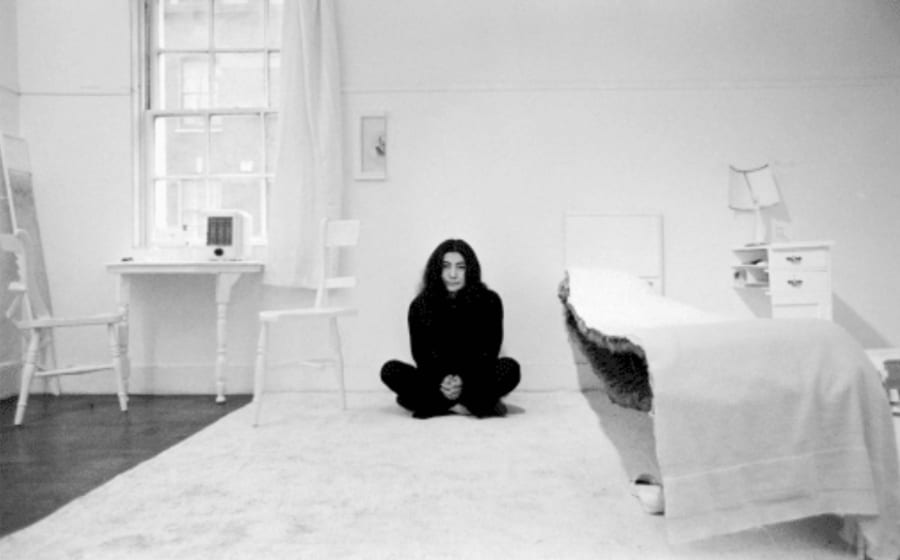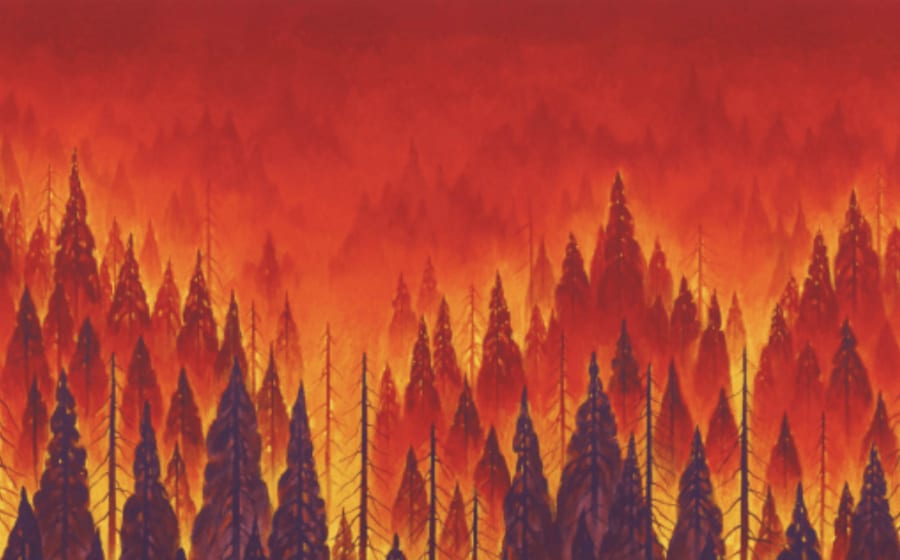One of the first Modern Chinese artists to touch on Queer themes, the late Shiy De-Jinn considered portraiture as ‘an act of co-creation between the artist and the model.’ The affective bond between painter and subject lends a picture its power. That emotional, relational intensity flows right out of Shiy’s canvases, where succinct, crisp lines depict colorful subjects against monochromatic backdrops. Born in Sichuan in 1923, Shiy studied with early Modernists including Lin Fengmian before relocating to Taiwan in 1948. A progressive and versatile painter, Shiy experimented with ink and watercolor and developed a penchant for landscape from 1970 onwards. But it is his portraits that stand out as his most memorable works. Curated by Alfonse Chiu, PTT Space’s solo presentation at Art Basel Hong Kong includes some of the artist’s most iconic portraits. Boy in Red (1970) features the profile of a slender, androgynous youth gazing invitingly out at the painter (and audience) from a background of leaf green. The subject of the painting may well be Zhuang Jia-Cun, Shiy’s former student and unrequited love interest; Zhuang was straight. The presentation is supplemented with excerpts from Shiy’s published correspondence with Zhuang – love letters, we could say.
Taro Masushio and Jacqueline Kiyomi Gork
Empty Gallery
The greatest and yet toughest thing about being in love is giving up the fiction of individual sovereignty. So suggests Empty Gallery’s group presentation at Art Basel Hong Kong, which brings together several artists in a collective reflection on the instability and impermanence of a subjecthood that swings like a pendulum between desire for contact with others and withdrawal. In a series of three untitled black-and-white photographs, New York-based Taro Masushio revisits photos he took nearly 20 years ago during his first outing at the Folsom Street Fair, the world’s largest Queer fetish event celebrating leather and BDSM subcultures. In cropping and restaging this archive of yesterday’s desire, Masushio cracks open a space between past and present to ponder the fraught nature of the self and its sense of belonging. Alongside is a work by Jacqueline Kiyomi Gork, Noise Blanket No.18 (2024): an oversized, kimono-shaped garment. The scale of the garment triggers a desire to be enveloped by it, like a boyfriend’s jacket, while its material (stitched, poured silicone) and function (to absorb and block out noise) are reminders of the inevitable frictions that can occur between bodies and environments. The flipside of desire is a retreat into one’s own little world, away from the hell of other people.
Xiyadie
Blindspot Gallery
Xiyadie’s work invokes a kind of love that overflows the borders of generations, sexualities, and lifeforms. Born in Shanxi province in 1963, Xiyadie learned traditional papercutting from his mother in his youth, before becoming a farmer and later a migrant worker in Xi’an and Beijing. As early as the late 1970s, he began incorporating real and imagined Queer sex scenes, drawn from his personal life, into his intricate compositions – a decision without precedent in that period of Chinese art. In Gate (1999), flowers and birds – symbols of fertility and beauty in Chinese folklore – emerge from the bodies of two male couples entwined, creating a scene of multispecies intimacy that speaks to the artist’s interest in Taoist-inspired folklore. Given its content, Xiyadie’s work was frowned upon for many years by the gatekeepers of Chinese contemporary art, who criticized its contemporary relevance (and obscenity). Other than a solo exhibition at the Beijing LGBT Center in 2010, Xiyadie has barely shown domestically. The artist started exhibiting overseas in the last decade, first in exhibitions in Gothenburg and Stockholm in 2012, facilitated by the Stockholm-based Chinese curator Si Han, and then in the high-profile ‘Spectrosynthesis’ exhibition series staged in Taiwan (2017), Bangkok (2019), and Hong Kong (2023). Xiyadie then began appearing on the international biennial circuit, showing at the Gwangju Biennale in 2018, the Ljubljana Bienniale of Graphic Arts in 2019, and soon, the main exhibition of the upcoming the 60th Venice Biennale.
It is said that when x-ray machines became standard medical technology in postwar America, people took to hanging x-rays of their own bodies at home as decor. So long as the beloved is a body (be it one’s own or that of another), love always entails a tinge of fetishism. The curious gaze seeks not only to fondle and undress, but to penetrate and devour. Recent works by Shahryar Nashat, on view in Rodeo’s group presentation at Art Basel Hong Kong, embody such interactions. Described by curator Jordan Carter as ‘meat objects’, they are composed by building layer upon layer of transparent jelly acrylic on inkjet prints of stock images of exposed animal carcasses. The body of work consists of four series – ‘Boyfriend’, ‘Lover’, ‘Hustler’, and ‘Brother’ – with each using a different source image and with titles representing a modality of homosocial relationships. Individual works are titled with filename extensions – for instance, Brother_01.JPEG – which introduces a deadpan, nearly surgical objecthood. Dematerializing the body through images, Nashat’s series could be read as a grim wink to the irreducible boundary between attraction and consumption, subject and object, fetishization and abjection.
Bhasha Chakrabarti and Biraaj Dodiya
Experimenter
Titled ‘What We Don’t Talk About When We Talk About Love’, Experimenter’s presentation at Art Basel Hong Kong stretches the parameters of love beyond those of a private romantic relationship towards the dimensions of a social, communal binder, examining its mixed promise and peril. The presentation includes a series of embroidered textile works by Bhasha Chakrabarti – Lineage (Blood & Bond), Genealogy (Old and New), and Kinship (Familial & Found) (all 2023) – which consider the lineage of feminine forms of labor as a reparative practice. In Siren’s Daughter II (2023), by the Mumbai-based artist Biraaj Dodiya, a medical stretcher affixed vertically to the wall registers a body through its absence. Mixing oil paint with body filler (a polyester resin with a cream hardener, used to return a damaged vehicle’s body to its smooth surface), the artist covers the steel stretcher’s surface with a textured abstraction. If the stretcher’s horizontality signifies support and mutual aid, the artist’s decision to hang it vertically on the wall as a canvas can be read as a nod to the spectacle of violence that saturates the current moment; a testament to love’s failure.
Juan Lee is an itinerant writer based between Europe and Asia.
Published on February 14, 2024.
Caption for full-bleed image: Taro Masushio, Untitled (Youth #4) (detail). Courtesy of the artist and Empty Gallery.


